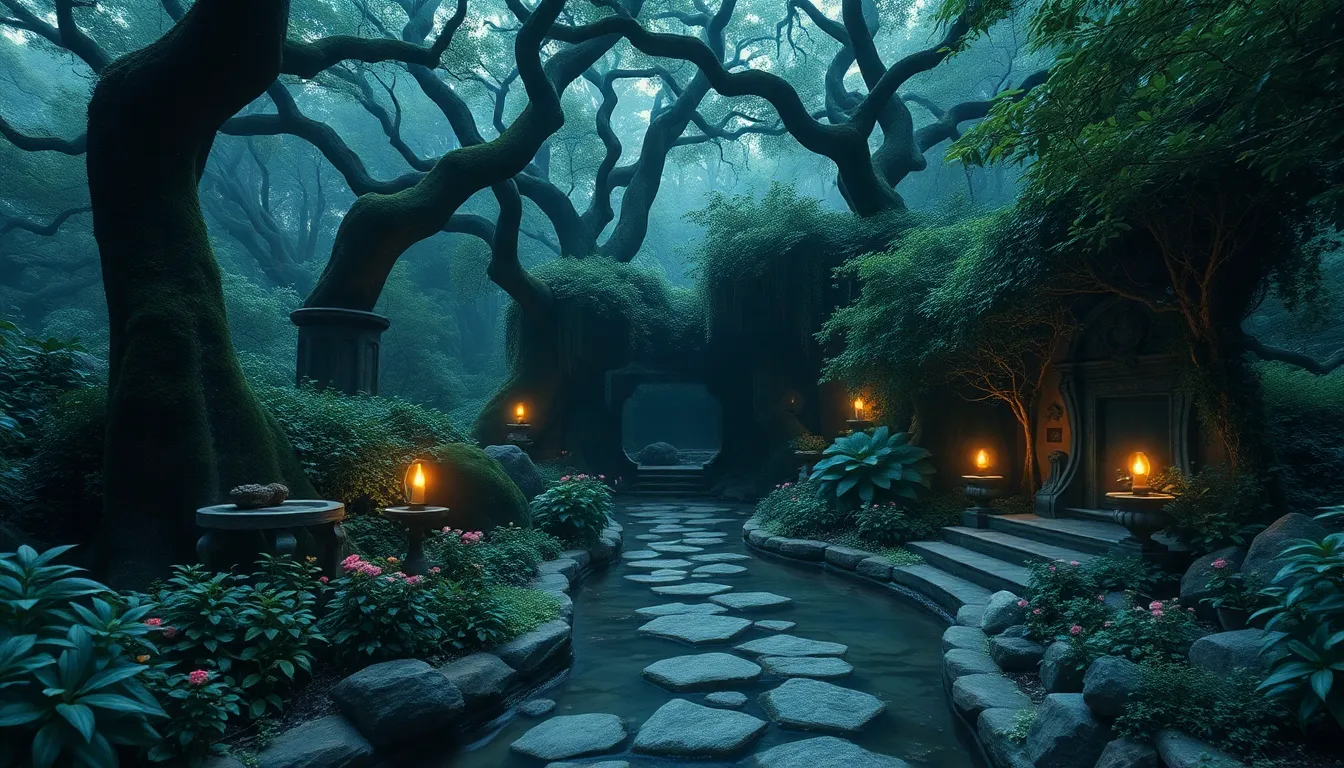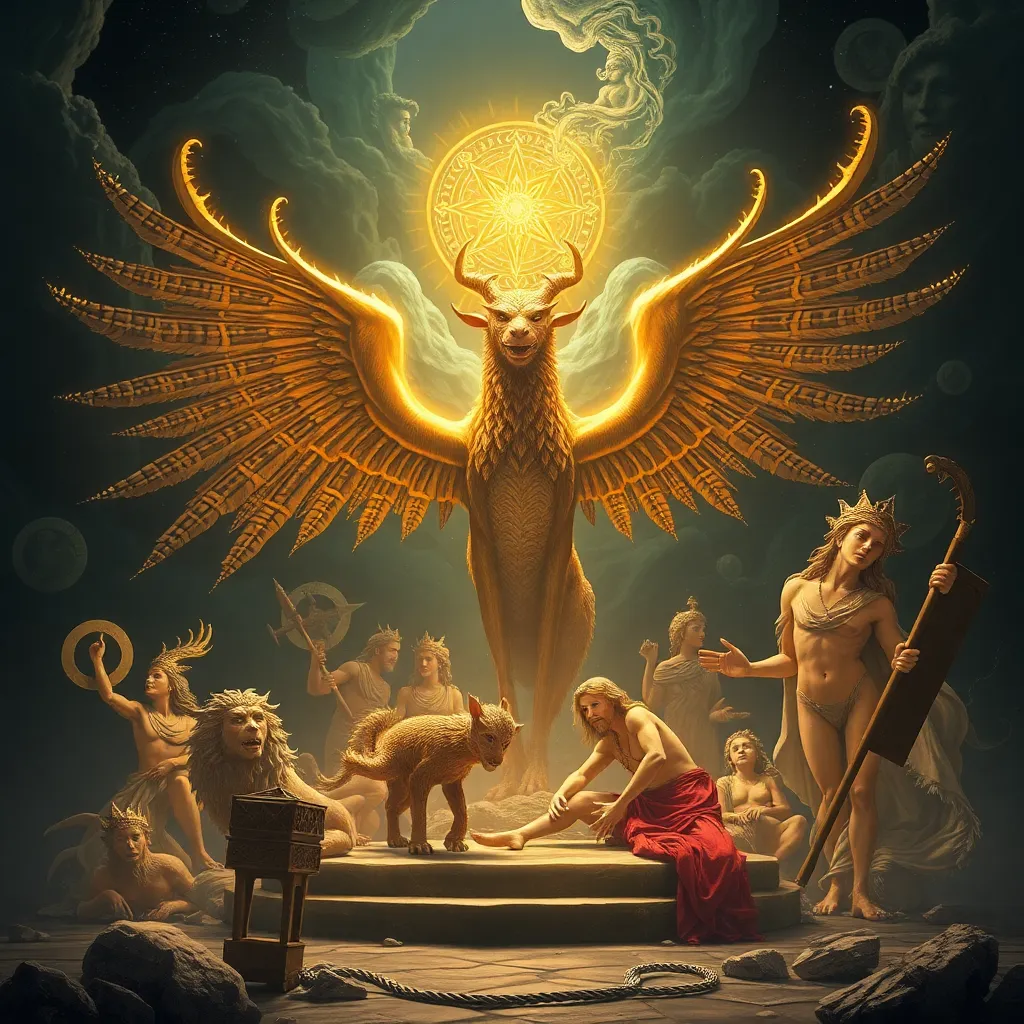The Secret Gardens of Mythology: Nature’s Sacred Spaces
I. Introduction
The concept of “Secret Gardens” in mythology refers to hidden or sacred spaces within nature that hold profound significance in various cultures. These gardens often serve as realms of beauty, mystery, and divine connection, reflecting humanity’s intrinsic relationship with the natural world.
Nature plays a crucial role in mythological narratives, representing not only the physical realm but also the spiritual and symbolic dimensions of existence. This article explores the significance of gardens in mythology across different cultures, highlighting their role as sacred spaces that embody themes of creation, fertility, and transcendence.
II. The Symbolism of Gardens in Mythology
Gardens in mythology are rich in symbolism, often representing paradise and utopia. They serve as metaphors for perfection, harmony, and the ideal state of existence. Here are some key symbolic roles of gardens in mythological contexts:
- Paradise and Utopia: Many mythologies feature gardens as idealized spaces, such as the Garden of Eden, symbolizing the ultimate state of bliss and innocence.
- Creation Myths: Gardens frequently appear in creation narratives, illustrating the emergence of life and the nurturing aspects of the earth.
- Fertility and Rebirth: Gardens signify growth, fertility, and the cyclical nature of life, often associated with agricultural abundance and seasonal changes.
III. The Enchanted Gardens of Greek Mythology
Greek mythology abounds with enchanted gardens that are integral to its rich tapestry of gods and heroes. Below are notable examples:
- The Garden of the Hesperides: This fabled garden, located at the edge of the world, is home to golden apples guarded by a dragon. The apples symbolize immortality, and the garden represents both temptation and divine reward.
- The Sacred Grove of Dodona: An ancient oracle dedicated to Zeus, this grove is filled with sacred trees and is a place where the divine communicates through the rustling of leaves, emphasizing nature’s connection to the spiritual.
- The Underworld Gardens: Persephone, the queen of the Underworld, is linked to the pomegranate, symbolizing life and death. Her story reflects the seasonal cycle of growth and decay.
IV. Sacred Spaces in Norse Mythology
Norse mythology also presents a rich array of sacred gardens and nature-centered spaces:
- Yggdrasil: The World Tree, Yggdrasil, connects the nine worlds and is a symbol of life, death, and rebirth. Its roots encompass sacred spaces and realms of various beings.
- The Garden of Idavoll: After Ragnarok, Idavoll is said to be a new world where life flourishes anew, representing hope and regeneration.
- Frigg and Freyja: These goddesses influence nature and fertility, embodying the nurturing aspects of the earth and its bounty.
V. Gardens in Eastern Mythologies
Eastern mythologies also celebrate gardens as sacred spaces, each with unique meanings:
- The Garden of Eden: In Judeo-Christian traditions, this garden is a symbol of purity, divine presence, and humanity’s original state before the fall.
- The Lotus Gardens: In Hindu and Buddhist beliefs, the lotus represents purity and enlightenment, often cultivated in sacred gardens that symbolize spiritual awakening.
- Sacred Mountains and Groves: In various Asian mythologies, mountains and groves serve as sacred spaces where humans connect with the divine and seek enlightenment.
VI. African Mythological Gardens
In African mythology, gardens are often intertwined with spiritual beliefs and cultural practices:
- The Sacred Grove of the Yoruba: This grove serves as a vital connection to the divine, where rituals and offerings are made to the gods and ancestors.
- Nature Spirits and Ancestors: Many African myths emphasize the role of nature spirits and ancestors in guiding and protecting communities, highlighting the sacredness of natural spaces.
- Community and Culture: Gardens symbolize unity and cultural identity, often serving as gathering places for rituals, celebrations, and storytelling.
VII. The Role of Flora and Fauna in Mythological Gardens
Flora and fauna play significant roles in mythological gardens, enriching their symbolism:
- Symbolic Plants: Various plants carry specific meanings; for instance, the olive tree symbolizes peace, while the lotus represents spiritual awakening.
- Mythological Creatures: Creatures like dryads and fauns often inhabit these gardens, embodying the spirits of nature and emphasizing the connection between humans and the natural world.
- Interplay of Humans and Nature: Many myths explore the dynamic relationship between humans and the environment, illustrating themes of harmony, conflict, and coexistence.
VIII. The Transformation of Secret Gardens in Folklore
Throughout history, the concept of secret gardens has evolved, influencing modern storytelling:
- Evolution of Garden Myths: Traditional garden myths have adapted to contemporary narratives, often reflecting modern values and challenges.
- Secret Gardens in Literature: Works like Frances Hodgson Burnett’s “The Secret Garden” draw on mythological roots, emphasizing themes of healing and transformation through nature.
- Representation in Media: Today, gardens continue to be depicted in films, art, and literature, symbolizing hope, beauty, and the human spirit’s resilience.
IX. The Influence of Mythological Gardens on Ecological Perspectives
Mythological gardens offer valuable lessons for modern environmentalism:
- Lessons from Mythology: Many myths teach respect for nature, emphasizing the importance of balance and stewardship.
- Preserving Sacred Spaces: Recognizing the sacredness of natural spaces can inspire efforts to protect and conserve the environment.
- Inspiration for Sustainability: The principles embodied in mythological gardens can inform sustainable practices and ecological awareness in contemporary society.
X. Conclusion
The enduring power of nature is reflected in the secret gardens of mythology, which continue to inspire and resonate with humanity. These sacred spaces remind us of our connection to the earth, urging us to cherish and protect the natural world while celebrating its beauty and significance throughout history.




